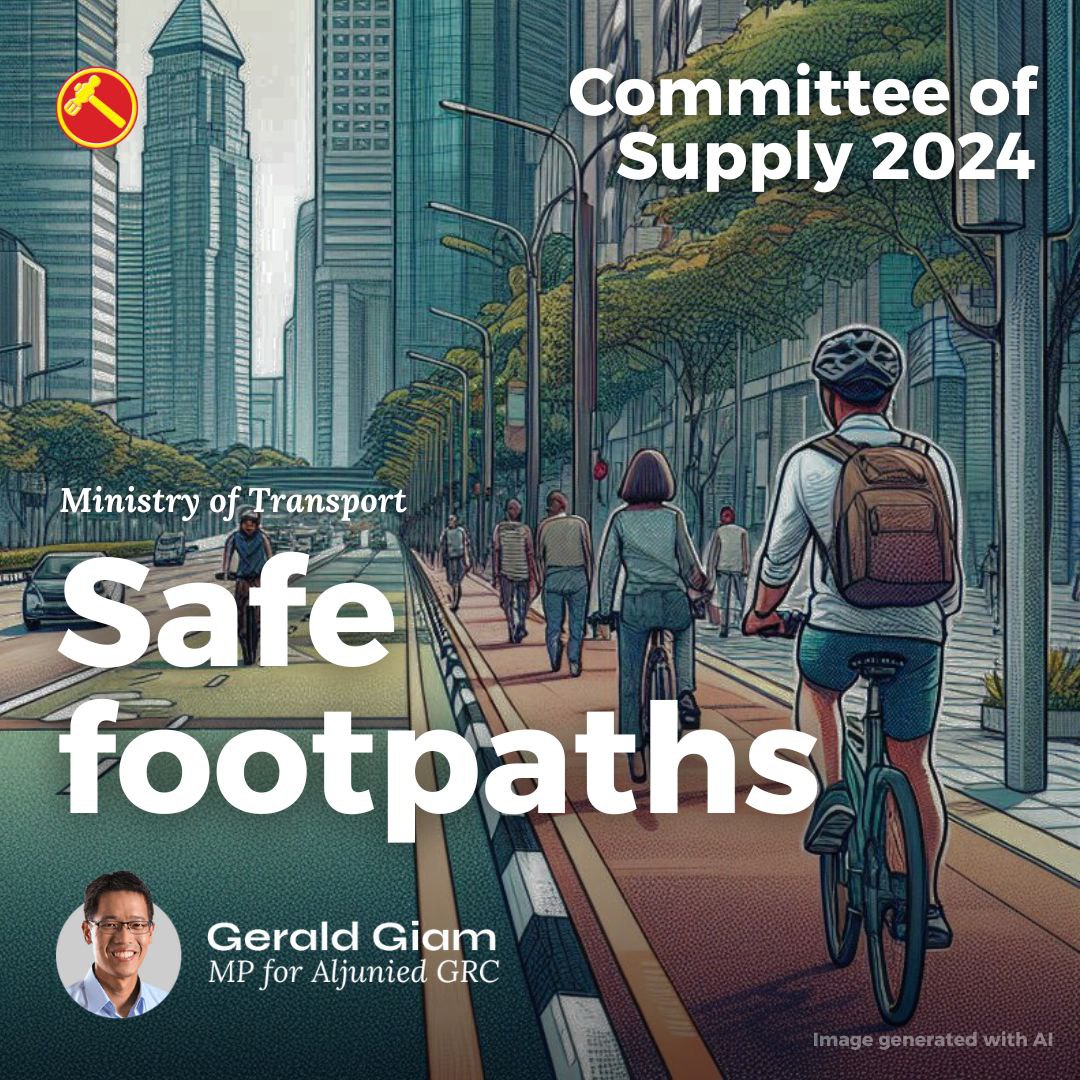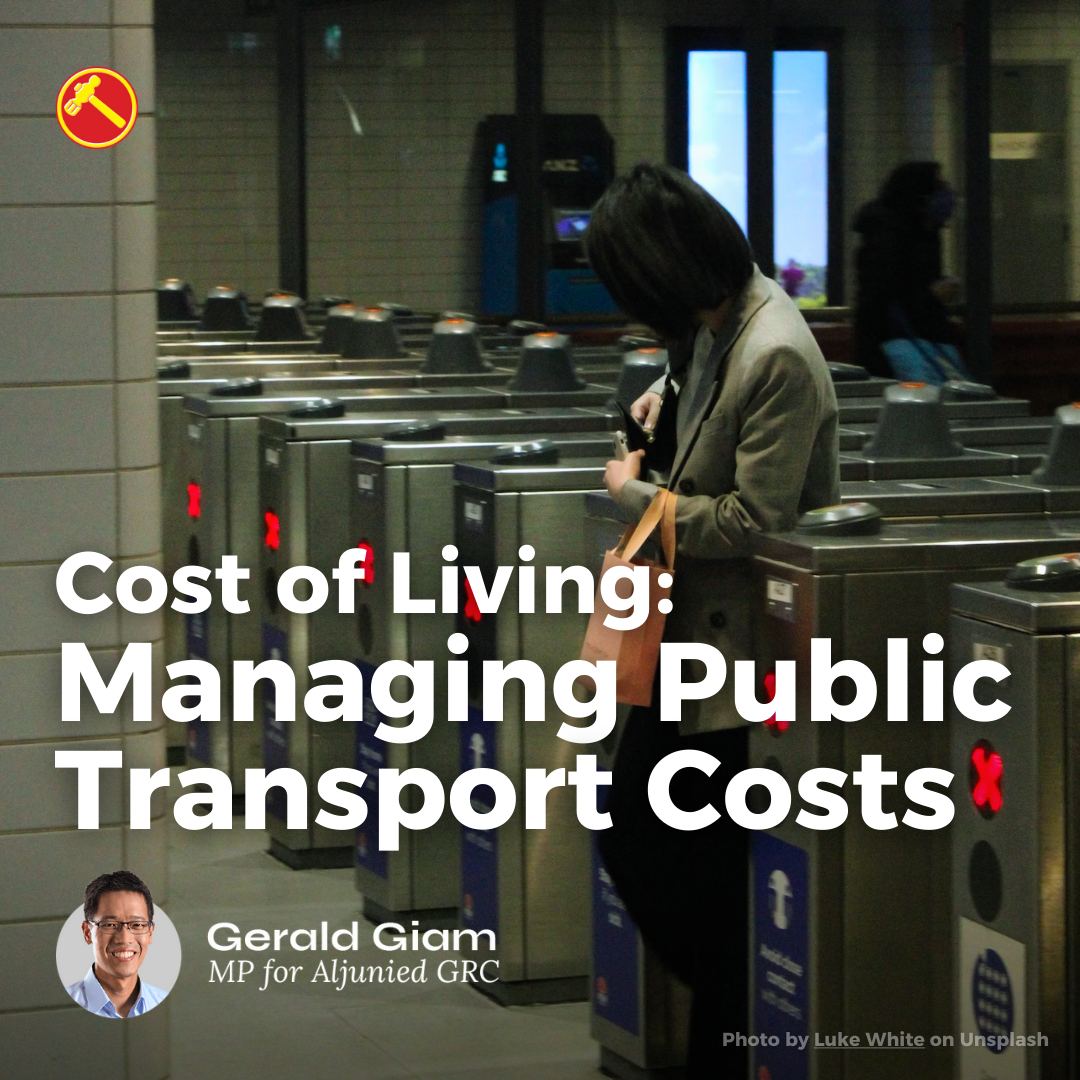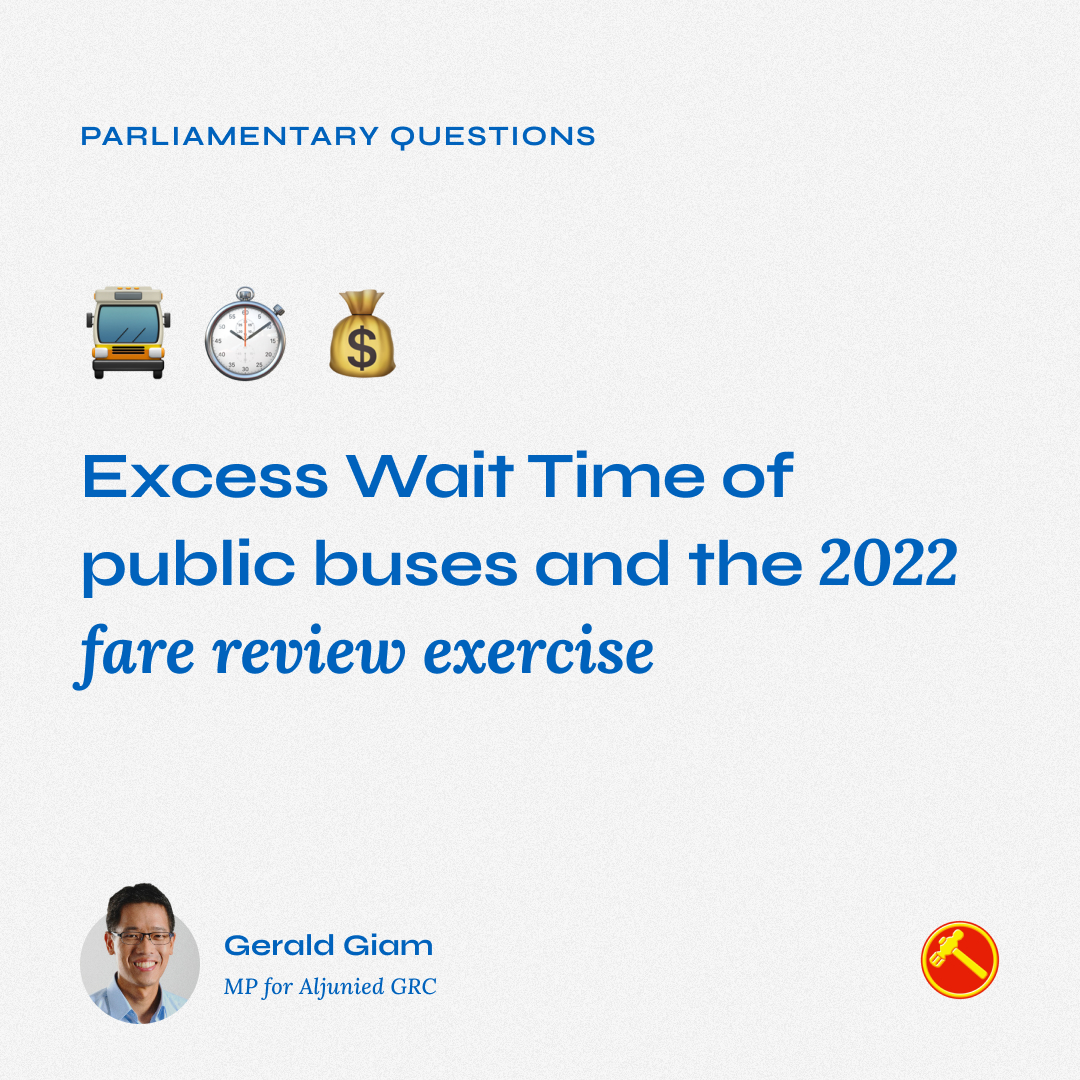This was my speech in Parliament on 7 November 2023 during the debate on the motion tabled by Leader of the Opposition, Mr Pritam Singh, and MP for Sengkang Louis Chua, on the cost of living crisis.
Cost of Living: That this House calls on the Government to review its policies so as to lower cost of living pressures for Singaporeans and their families.
Mr Speaker,
Singapore faces an undeniable upward trend in the cost of living, driven by factors such as global inflation, supply chain disruptions, escalating energy prices and labour shortages. However, contrary to what the Member for Bukit Panjang seems to imply in his amendments to the motion, domestic policy decisions, like the hike in the GST, increases in water and electricity tariffs, and rises in public transport fares, coupled with the skyrocketing cost of COEs, also contribute to the increase in the cost of living that Singaporeans are experiencing.
Blackbox Research’s recent SensingSG survey found that 59% of Singapore residents highlighted cost of living among the two most important national and community issues. Public transport costs are also a contributor to the cost of living in Singapore, making up 2.5% of the MAS’ Core Inflation basket.
Over the last 10 years, the rate of increase in bus and train fares has been faster than that of core inflation. In the 2023 Fare Review Exercise, the Public Transport Council (PTC)’s fare adjustment formula produced a whopping 22.6% fare increase, although the PTC chose to cap it at 7%. This decision led to the Government providing an additional subsidy to public transport operators (PTOs) to the tune of about $300 million in 2023, up from the $200 million the year before. This subsidy still does not eliminate the remaining 15.6% fare increase, which the PTC has deferred to future reviews.
In the meantime, PTOs have continued to post eye watering profits. Between 2011 and 2022, SMRT and SBS Transit have together posted profits averaging $74.6 million a year, reaching $110 million in the last financial year. This is particularly jarring against the backdrop of increasing fares and government subsidies. The PTOs in our current public transport model face little competition with each other, because they operate different transport routes across the island. Even duplications of the same routes for different transport modes are slowly being eliminated, as bus services running parallel to new MRT lines are removed.
These prompt questions about the efficacy of the current fare adjustment formula, and a broader discussion around the sustainability of Singapore’s public transport model.
Inching towards Nationalisation
The current model consists of a mix of government ownership of transport assets and operating contracts carved up among multiple profit-oriented PTOs. The model is inching more towards nationalisation than the Government would like to admit. Starting in 2010, all rail assets were transferred to the government. The year 2012 saw the introduction of the $1.1 billion a year Bus Services Enhancement Plan. In 2013, the Bus Contracting Model saw bus services in certain areas tendered out to PTOs. This was completed in 2016. The Land Transport Authority (LTA) now owns bus assets and pays the PTOs an operating fee, while collecting all fare revenue and setting the service levels. The Government is now subsidising public transport services to the tune of $2 billion a year, or $1 for every journey.
This mesh of responsibilities involving the operators, the regulator and the government potentially introduces inefficiencies and additional costs. These will eventually trickle down to commuters and taxpayers, manifesting as either increased fares, higher government subsidies, lower service coverage, or all of the above.
Some service coverage is already being reduced. In the past three years, about 30 bus services have been shortened or removed. Such changes have affected my residents in Bedok Reservoir, who continue to voice their concerns to me about long wait times and crowded feeder bus rides to Bedok MRT station. Elderly commuters, who favour direct trunk services which facilitate shorter walking distances during the commute, are also affected by these changes.
WP’s National Transport Corporation proposal
As the Leader of the Opposition said when moving this Motion, we need to move beyond one-time fiscal handouts and explore possible structural changes to existing policies to reduce cost-of-living expenses for Singaporeans.
It is therefore timely to revisit the proposal to establish a National Transport Corporation (NTC). This was first proposed by the Workers’ Party in 2006. We envisage the NTC as a publicly-owned, non-profit, multi-modal land transport entity which will oversee the planning and operation of all MRT, LRT and trunk bus services in Singapore.
The NTC offers many benefits over the current public transport model.
First, under the NTC, the substantial profits which go to PTOs and their shareholders could instead be redirected to benefit commuters. Such revenue could mitigate fare increases and subsidise transport for the elderly, people with disabilities and low income households, directly addressing concerns about the cost of living.
Second, with full access to the NTC’s financial records, the government could set fares just high enough to ensure the NTC’s fiscal sustainability without overly burdening commuters. The complex fare adjustment formula can be done away with. Fare adjustments could be introduced progressively, avoiding abrupt changes during times of economic hardship.
Third, the NTC could manage bus interchanges, MRT and LRT stations, and their associated linkways, leveraging the rent from these prime retail and commercial areas to support its operations. This will help moderate fare increases and the need for ever-growing government subsidies.
Fourth, the NTC could hire top transport engineers and managers, both locally and globally, based on their expertise, track records and commitment to public service. Companies are fuelled by their people. Profit motives are not the sole drivers of efficiency and productivity improvements. By setting stringent KPIs and empowering these professionals, the NTC can continually improve service standards. In contrast, the current penalties for PTOs’ service disruptions are trivial against their profits and don’t directly affect executive pay. The NTC’s approach will see a marked improvement in performance management.
Fifth, for transparency and accountability, the NTC should disclose its executive salaries, primary profit sources and major cost drivers, enabling Parliament and the public to examine its financial health and hold relevant parties accountable.
Sixth, a unified transport entity like the NTC would ensure more uniform service standards, enhanced service integration and comprehensive access to data for service improvement. Utilising the vast array of commuter data, the NTC can employ AI to forecast travel trends, dynamically directing buses and trains where they are most required. Improvements suggested by commuters in one region of Singapore could be applied island-wide.
Seventh, the NTC would yield economies of scale in procurement, staff allocation and technological infrastructure, leading to further savings that benefit commuters.
Eighth, the NTC would assume operational responsibilities currently held by the LTA, allowing the LTA to focus solely on its regulatory role, eliminating potential conflicts of interest from being both a regulator and an operator.
Lastly, the NTC would be given the freedom to experiment with and spearhead land transport solutions, and position Singapore at the vanguard of global transport innovations. This could pave the way for Singapore to be an early adopter of advancements like autonomous buses or eco-friendly hydrogen-powered vehicles.
Conclusion
Sir, the National Transport Corporation is a rethink of Singapore’s public transport model. It shifts us away from public transport companies that profit from government subsidies, to a non-profit, unified provider that will be more efficient and affordable for both commuters and taxpayers.
This new model will place the needs and well-being of our commuters at the heart of our transport policy. It will not only address the immediate cost concerns of Singaporeans, but also steer Singapore’s public transport into the future.
Sir, I support the Motion standing in the name of my Hon. Friends, the Leader of the Opposition and Member for Aljunied, Mr Pritam Singh, and the Member for Sengkang, Mr Louis Chua.





